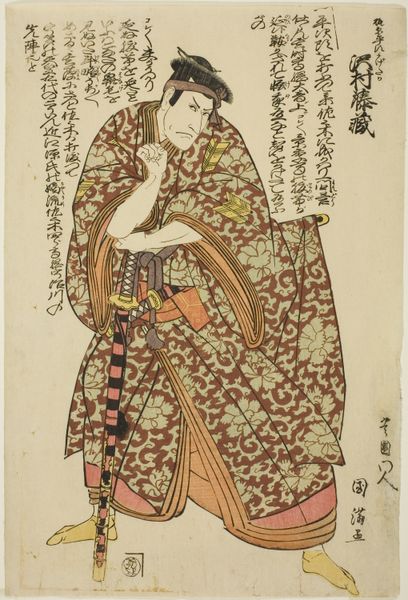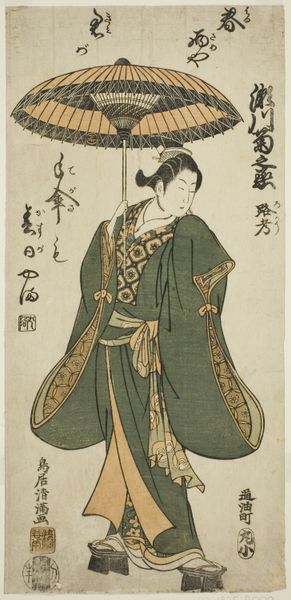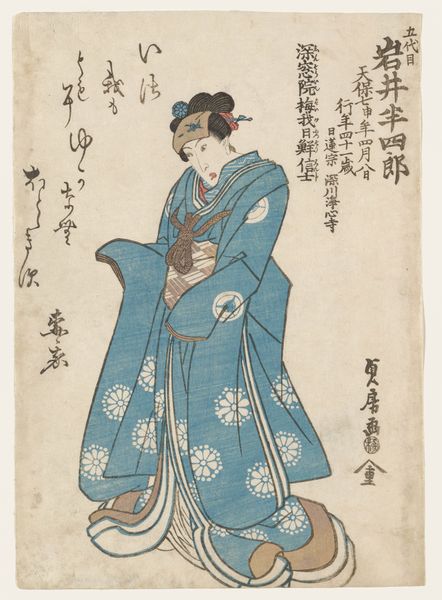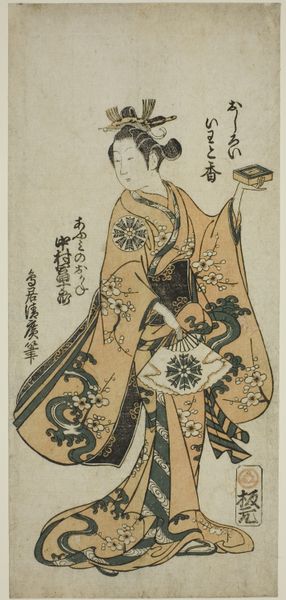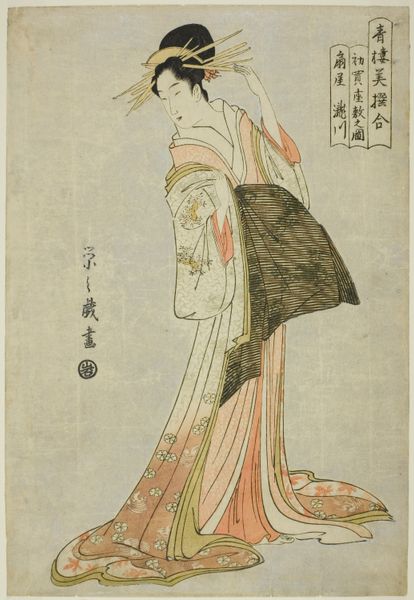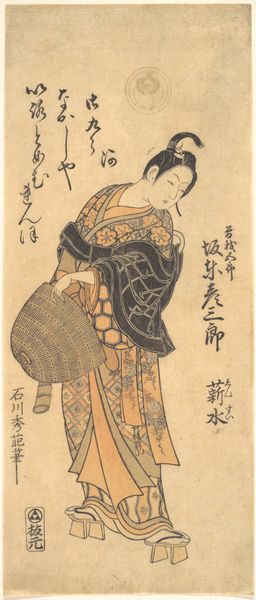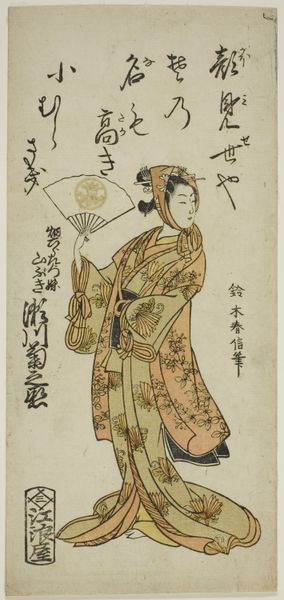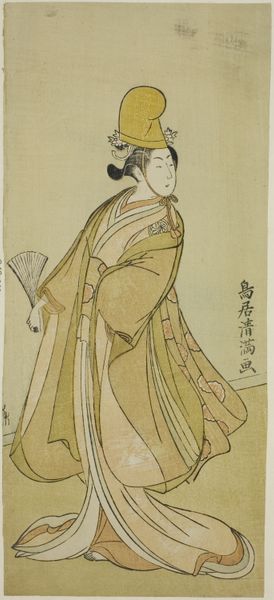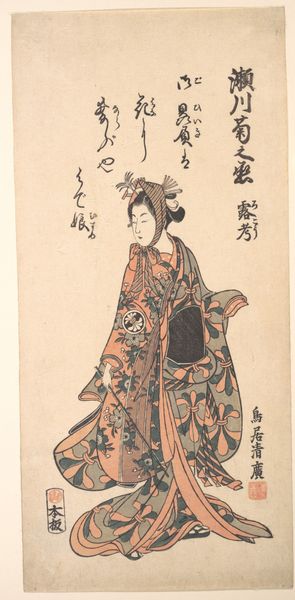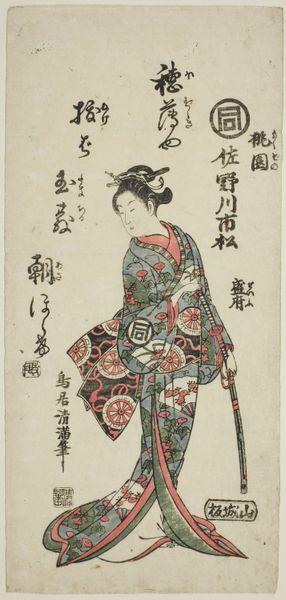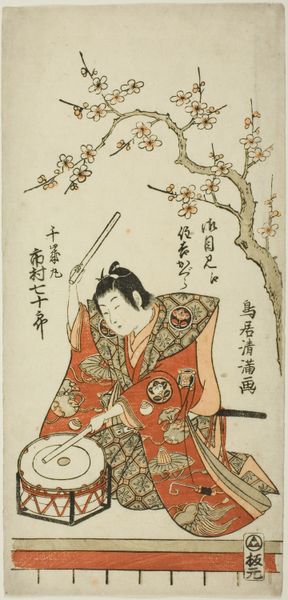
The Second Segawa Kikunojo in the Role of Tegoshi no Shosho 1747 - 1767
0:00
0:00
print, woodblock-print
#
portrait
# print
#
asian-art
#
ukiyo-e
#
woodblock-print
Dimensions: H. 12 in. (30.5 cm); W. 5 1/2 in. (14 cm)
Copyright: Public Domain
Curator: This is a woodblock print by Torii Kiyomitsu, created sometime between 1747 and 1767. It depicts the actor Segawa Kikunojo II in the role of Tegoshi no Shosho. Editor: There's something immediately captivating about the pattern work here—the layered textiles, each subtly different, feel so rich despite the relatively limited palette. It's got a wonderfully elegant flow. Curator: Absolutely. Kiyomitsu, part of a lineage of artists connected to the Torii theatre, was really instrumental in solidifying the style of *ukiyo-e* prints focusing on actors. Editor: The floral motifs, especially on the sleeves, catch my eye. White plum blossoms perhaps, symbols of resilience and renewal. It speaks to the fleeting nature of performance, capturing a moment that is eternally re-blossoming, even after the curtain falls. Curator: That interpretation works well. These prints served an important function – almost like theatrical publicity. They circulated widely, shaping public perceptions of both the actors and the roles they embodied. Theatre was, after all, a really important cultural space. Editor: You know, the gentle slope of the figure and positioning of the hands remind me almost of depictions of Buddhist deities bestowing a blessing, perhaps suggesting how culturally important actors like Kikunojo II truly were. And consider that it's Segawa Kikunojo II. He became quite renowned for playing both male and female characters. What cultural values were embodied in his ambiguous stage personas? Curator: Indeed, thinking about it in terms of gender and performativity brings added depth. Segawa's celebrated *onna-gata* roles challenged rigid societal expectations. That liminal space he occupied, through his craft, challenged norms and played with perceptions, influencing how identities were perceived at the time. Editor: Seeing this piece really helps connect how people viewed theatre, the symbols people responded to, and the society as a whole. Curator: The woodblock print gave that access, providing a valuable visual link between stage, artist, and the broader audience that circulated ideas within society.
Comments
No comments
Be the first to comment and join the conversation on the ultimate creative platform.
